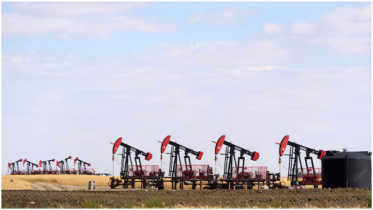Fed cuts interest rates but signals slower pace of easing

The US central bank cut its benchmark interest rate by a quarter of a percentage point but signalled a slower pace of easing in 2025, sending the dollar racing higher and US stocks lower.
The Federal Open Market Committee (FOMC) voted on Wednesday to reduce the federal funds rate to 4.25-4.5 per cent, its third cut in a row. The decision was not unanimous, with Cleveland Fed president Beth Hammack casting a dissenting vote, with a preference for holding rates steady.
Officials’ economic projections released alongside the rate decision pointed to fewer reductions than previously forecast for 2025, underscoring policymakers’ concern that cutting borrowing costs too quickly could undermine efforts to cool price growth across the world’s biggest economy. Policymakers also lifted their projections for inflation.
Fed chief Jay Powell said that following Wednesday’s cut, the central bank’s policy settings were “significantly less restrictive” and could now be “more cautious” as they consider additional easing. He also characterised the December decision as a “closer call” than at previous meetings.
Inflation was moving “sideways”, Powell added, while risks to the labour market had “diminished”.
Wall Street bank Morgan Stanley said the Fed’s forecasts for 2025 were “much more hawkish than we anticipated”.
US government bonds fell in price after the Fed decision, with the policy-sensitive two-year Treasury yield rising 0.08 percentage points to 4.33%. The dollar jumped 1% against a basket of six peers, while Wall Street’s S&P 500 share index dropped 1%.
The Fed’s goal is to apply enough pressure on consumer demand and business activity to push inflation back to the US central bank’s 2% target without harming the jobs market or the economy more broadly.
Officials now expect to cut the benchmark rate by half a percentage point next year to 3.75-4 per cent, down from the full percentage point reduction predicted in September’s “dot plot”. Four officials pencilled in one or no additional cuts next year.
Most saw the policy rate falling to 3.25-3.5 per cent by the end of 2026, also higher than in the forecast from three months prior.
They also raised their forecasts for inflation once food and energy prices are stripped out to 2.5% and 2.2% in 2025 and 2026, respectively, while they predicted the unemployment rate would steady at 4.3% for the next three years.
“In considering the extent and timing of additional adjustments to the target range for the federal funds rate, the committee will carefully assess incoming data, the evolving outlook, and the balance of risks,” it said.
In a sign that the Fed is preparing to skip rate cuts at forthcoming meetings, the FOMC amended its language regarding future changes to its policy settings in its statement.
Wednesday’s decision was not the first this year that was opposed by a Fed official, after Michelle Bowman cast a dissent to September’s half-point reduction. That was the first time a governor voted against a decision since 2005.
The quarter-point cut was widely expected by financial markets, but came amid debate among officials over how quickly inflation was retreating towards the Fed’s 2% target. The core personal consumption expenditures price index, the central bank’s preferred inflation gauge that strips out food and energy prices, rose at an annual rate of 2.8% in October.
The Fed kicked off a new rate-cutting cycle in September with a bumper half-point cut, but fears about the labour market have ebbed since then and the economic outlook has brightened. That healthy state of the US economy has changed the calculus for officials as they try to settle on a “neutral” rate that neither constrains growth or drives it too high.
The central bank has described recent cuts as a “recalibration” of policy that reflects its success in knocking inflation from a peak of about 7% in 2022.
On Wednesday, Powell said the Fed was in a “new phase in the process”, suggesting that the bar for future cuts would move higher as rates approached estimates of neutral.
Fed officials raised that estimate for the neutral rate again, with a majority now pencilling it in at 3 per cent. This time last year, they gauged it was 2.5%.
The Fed meeting came just weeks before Donald Trump returns to the White House, having vowed to raise tariffs, deport immigrants and slash taxes and regulations. Economists recently polled by the Financial Times said the policy combination could trigger a new bout of higher inflation and hit growth.
.png)




